Tsichlazoma salvini: description, care, breeding, compatibility
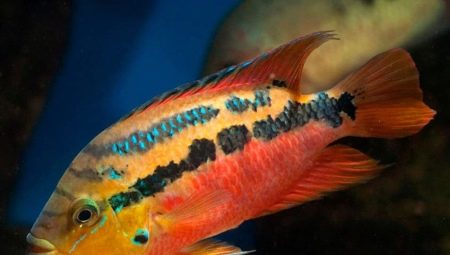
The bright, exotic and extremely mobile salvini cichlazoma belongs to the cichlid family, it comes from the shores of natural freshwater reservoirs at the junction of South and North America. Despite its decorative appearance, the fish is an active hunter, usually peaceful, it is capable of showing obvious aggression when the question of protecting the territory arises. In order to maintain a cichlazoma, novice aquarists need to study the characteristics and habits of this animal.
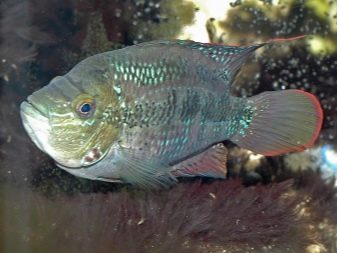
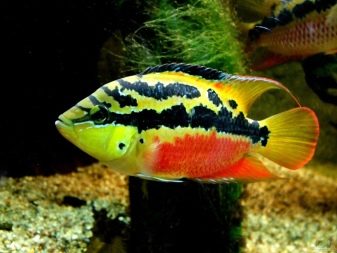
Description of the species
The variegated perch, as the cichlid fish is often called, has a noticeable appearance. The basic tone of his body fluctuates between lighter and deeper shades of yellow and marsh green, two blue-black lines run from the eyes to the tail. The abdomen is red or orange in color. In addition, the body is covered with blue specks and specks.
Unfortunately, until the salvini becomes an adult, it is an unremarkable gray animal and, only entering reproductive age, acquires its wonderful, colorful coloration.
In nature, these fish feel comfortable in rivers with strong currents, while other types of cichlazomas can lead a bottom lifestyle, salvini swim and hunt in different layers of water, feeding on insects, small fish, mollusks, worms, sponges and other species invertebrates.
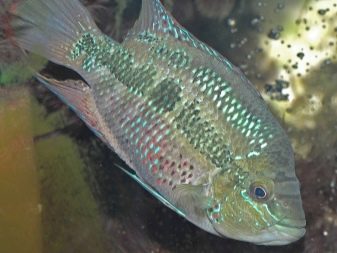

The size of the body of the fish is from 12 to 18 cm, depending on whether it is a male or a female, so the animals are quite suitable for aquarium keeping, although in nature sometimes larger specimens 20 cm long also grow.However, in order to have an adorable beauty, you need to know about her less pleasant details.
During the spawning period, which occurs every 30 days, and later (during the growth of "children"), the head of the family begins to behave inappropriatelyterrorizing other species of aquarium inhabitants, as well as fish-congeners, in a word, everyone who fell under the hot hand, including the mother of fry. Because of this, you will need to regularly plant other fish or keep cichlase in pairs. If, nevertheless, it is planned to combine a predator with neighbors, then you will need a more spacious dwelling - an aquarium with a doubled volume of water.
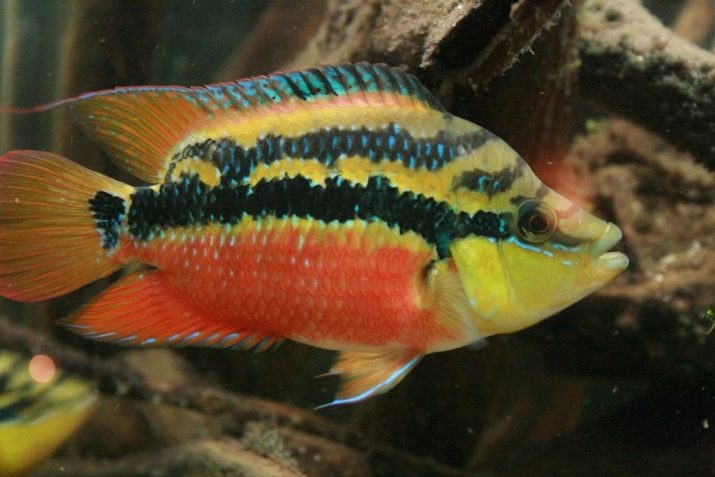
Conditions of detention
Even a pair of cichlazes will require an impressive space - 180-200 liters, but if you settle other representatives of the underwater fauna next to it, the container should have a capacity of at least 400 liters.
There are also a number of requirements.
- Since the animal is accustomed to the tropical climate, the temperature at which it feels comfortable is 25-27 degrees. On a scale of hardness indicators, that is, the content of magnesium and calcium salts in water, from 7-16 units. at a pH of water from 6 to 8 units.
- The fish does not tolerate a polluted environment, it needs clean water with a sufficient level of oxygen for active movement, therefore it is important to equip the aquarium with internal and external filters. It is also important to install an aeration system - a compressor or a pump with this function.
- For the bottom space, you can use any soil: fine and coarse sand, small pellets of mineral rocks, gravel, stone chips.
- The presence of vegetation for the animal is irrelevant, but necessary for biological balance and shading. Although the main thing for the fish is space for movement, you can plant several bushes of plants in the corners or closer to the aquarium walls so that the middle remains free. At times, salvani can hide in thickets, because it does not like bright light, and for spawning, the couple digs holes in the ground in secluded shaded places.
- But the cichlid is not indifferent to the underwater "architecture": all kinds of snags, labyrinth structures with through passages.
- To replace part of the water, in order to keep it clean, it is necessary every 7 days, it is important to completely rinse the aquarium at least 1 time in 2-3 months.

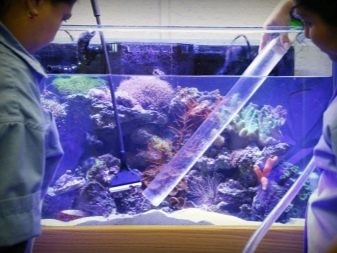
How and what to feed?
The cichlid is, first of all, a predator, moreover, gluttonous, so you should think over the diet in advance. A real treat for fish is live food, for example, small fish. But also cichlazoma will not refuse food sold in a frozen state: brine shrimp, bloodworms, daphnia, earthworms.
You can feed the animal with seafood, shrimps, which are thawed and chopped before feeding. For a variety, salvini should be fed with herbal supplements: vegetables such as spinach, zucchini, lettuce, dandelion. They are rubbed, they are formed into balls.
But the main food for fish should be a special balanced food for cichlids in the form of flakes, granules and sticks for especially large specimens, which include fish, meat and plant components.
Adult fish are fed once a day, grown fry - 2 times. The food is given as much as the animals will eat in 12-14 minutes. Anything that remains should be caught and removed immediately so as not to pollute the water.
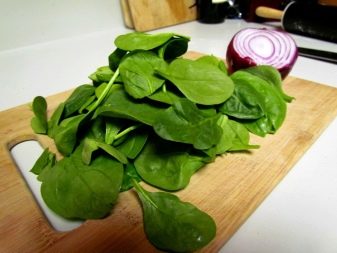



What species can cichlazoma get along with?
With sufficient space in the aquarium, it is possible to settle other fish next to the salvani, with which they have relative compatibility. But gentle and small inhabitants of the underwater world, including the so popular neons, guppies and even scalars, which belong to the cichlaz family, are not suitable for this.
Perhaps, the best options for living together are other cichlid species, as well as such types of catfish as tarakatum, antsitrus, corridor, living in the bottom zone.
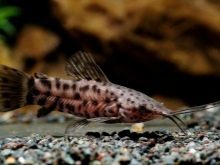
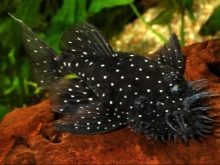

Growing in an aquarium
Tsichlaz can be called monogamous, they create couples and observe marital fidelity throughout their lives, once a month laying clutches of 500 eggs. For this, a flat and smooth surface is selected - a large sheet or stone.
Already 6–7 days after fertilization, fry are born. Cichlids are zealous parents who tenderly guard each egg. You can understand that spawning will soon begin by the fact that the water temperature in the aquarium has increased by several degrees.

For spawning to be successful, and the babies to grow well, you need low lighting, clean and oxygenated water, and the absence of pathogens in it. For feeding "kids" you can use finely ground tubifex, brine shrimp larvae, ciliates ("live dust").
Inexperienced aquarists need to have a good idea of \ u200b \ u200bthe desire to purchase cichlazoma salvini, what are the needs of this exotic fish with unpredictable behavior, and to begin with, do not combine it with other representatives of the aquatic environment.
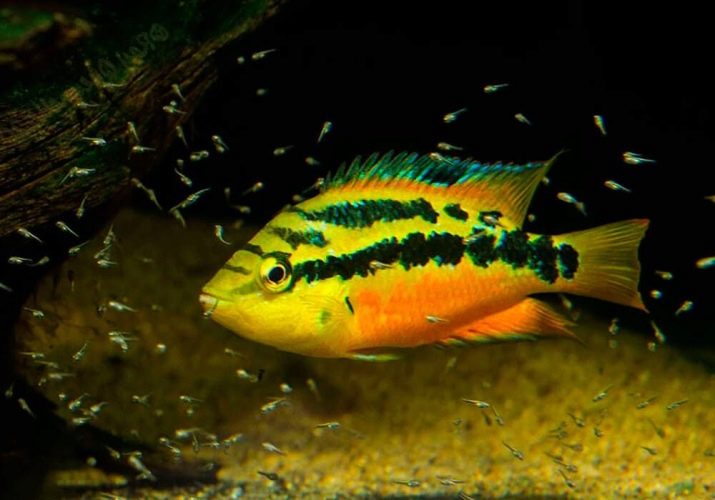
Further about the salvini cichlazoma, see the video below.








